The Plan Málaga project is a joint venture between the Ministry of Development and Aena and through the investment – which will continue up until 2013 – the airport’s operating capacity will double to 9,000 passengers per hour.
On 16 March, the flagship feature of the project was realised with the inauguration of the €410 million Terminal T3, which covers an area of 250,000sqm and has increased the capacity at Málaga Airport to 30 million annual passengers. “T3 is a qualitative and quantitative leap in the service provided, not only doubling the operational capacity of the airport, but also offering the airport a revolutionary commercial offer with a meaningful effect on the service provided,” Andión explained.
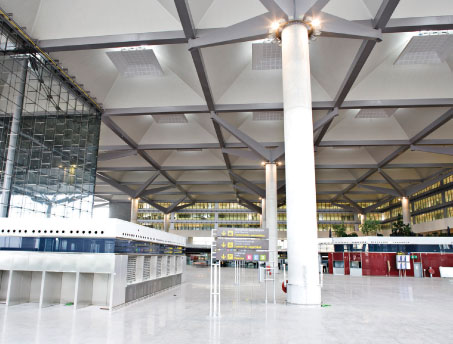
The new Terminal T3 covers an area of 250,000sqm and has doubled Málaga Airport’s operating capacity to 9,000 passengers per hour.
The new terminal includes 20 boarding gates, 86 check-in counters, a central security checkpoint and an Automated Baggage Handling System, which allows the airport to handle up to 14,000 bags per hour.
While the processing building, which includes the check-in and baggage claim areas, occupies almost 20,000sqm of the new terminal building, the boarding area alone accounts for a further 10,000sqm of floor space.
Meanwhile, the 12,000sqm commercial area includes more than 50 shops and food and beverage (F&B) outlets, including the second-largest duty free store in Europe and the largest in Spain, courtesy of Aldeasa.
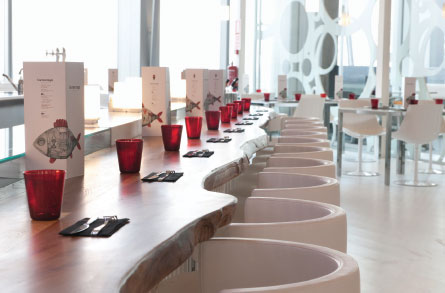
Ripoll: “As a key Spanish airport, Málaga is very important to us and we’ve invested heavily in our new operations here.”
SSP increases F&B offering
Málaga Airport’s new Terminal T3 boasts a wide food and beverage (F&B) offering, with 12 new bars and restaurants operated by SSP. Ranging from Spain’s first Caviar House & Prunier Seafood Bar to the Burger King Whopper Bar, the new terminal offers an F&B assortment to cater for anything from luxury dining to fast food.
Blanca Ripoll, managing director, SSP Spain, said: “The new terminal offers considerable potential for the development of F&B sales both in number of units on offer and the greater variety of brands and concepts.”
Having been operational at the airport since 1996, SSP now operates a total of 15 units across the airport. “As a key Spanish airport, Málaga is very important to us and we’ve invested heavily in our new operations here,” Ripoll continued. “Not only does it serve a large number of passengers, but it’s also a world class facility in terms of architecture and design and a very prestigious hub at which to operate.”
SSP currently operates at a number of airports around the world and recently opened six new units in Sydney, as well as new operations at Houston and New York JFK, yet each of the offerings is specifically tailored to cater for regional demands.
Ripoll said: “Aena’s brief on what type of concept they wanted at each particular location was very specific and this was the foundation of our proposals for the new terminal. We then commissioned a major new research project to explore what customers wanted and needed at the airport. This, coupled with our many years of experience at the airport, was then used to refine our plans for the brand mix.”
Environmental focus
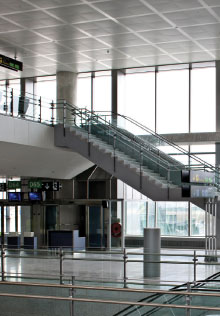
Environmental sustainability is at the heart of the Plan Málaga project and the airport’s transparent glass structure promotes the use of natural light sources.
Terminal T3 also boasts impressive ‘green’ credentials, with environmental sustainability very much apparent in both the architecture of the terminal and the construction techniques used during its development.
For instance, prefabricated concrete components were used to minimise construction waste, while the curtain wall between the atrium and the check-in areas provides maximum transparency to increase the use of natural light.
Furthermore, natural metals, such as the zinc in the roof, were used to reduce the use of polluting asphalt products and the installation of adiabatic coolers – an environmentally-friendly form of air conditioning – help to minimise water consumption and reduce greenhouse gas emissions.
Intermodality is also another important characteristic of the new-look Málaga Airport. Thanks to the transport interchange, which has been built on a plaza above the bus station, passengers using T3 will have easy access to various means of transport, including the bus station and the future Cercanías station for local trains, as well as access to taxis and the car rental areas.
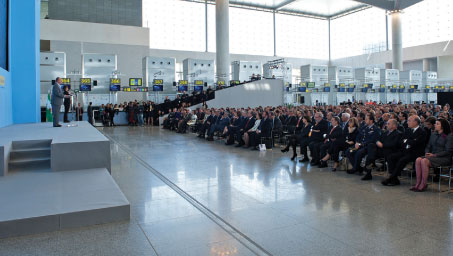
The €410 million T3 was inaugurated at a special ceremony on 16 March, in the presence of King Juan Carlos and representatives from the political, touristic, economic and aeronautical fields.
Trackjet secures KLIA contract
TrackJet Technology has recently been awarded the contract to remove rubber and paint markings, oil and fuel spillages from the runway surfaces at Kuala Lumpur International Airport (KLIA).
The Malaysian Airports Company has been compliant with Green Globe 21 – an agenda of 21 principles based on sustainable development – for several years and has now employed an eco-friendly system to maintain the airport’s runway surfaces.
KLIA engineers have already received training with the TrackJet system at the manufacturer’s plant in Germany to ensure they are sufficiently trained in the operation of the ultra high water pressure system.
In order to be able to clean the aprons or other difficult-to-access areas at the airport, the system is equipped with an extension satellite rotor for manual-driven jetting work. With this option, the working area can be extended by approximately 25m from the main TrackJet equipment.
Second runway
Since the Plan Málaga project was first launched in 2004, various other improvement works have also been completed across the airport, including a new seven-storey, 2,500-bay car park, the construction of a General Aviation Terminal, a new Cargo Terminal and two apron expansions. A new Safety and Services Centre, an Aeronautical Activities Building and additional waiting rooms have also been completed since the project was launched six years ago.
In order to further prepare the airport for future growth, the airfield is also currently undergoing a €330 million expansion, with a new 3,090m runway providing the centrepiece, along with the construction of a parallel taxiway with accompanying rapid-exit taxiways, an aircraft parking apron and a new building for the Fire Fighting Service.
“The airfield redevelopment works currently in progress are going on at a steady pace and the civil work on the second runway will be completed during the first half of 2011,” Andión explained. “Once completed, we will have an estimated term of six months for testing, calibration flights, AIRAC (Aeronautical Information Regulation and Control) cycles and so on, so the most likely date of starting operations will be the end of 2011.”
In addition to the redevelopment of the airfield and other ongoing works, also as part of Plan Málaga, two new accesses in the north and south are currently under construction. Once completed, Málaga Airport will have three separate road access points: the current MA-21 route, and exclusive access roads from both the north and south of the airport.
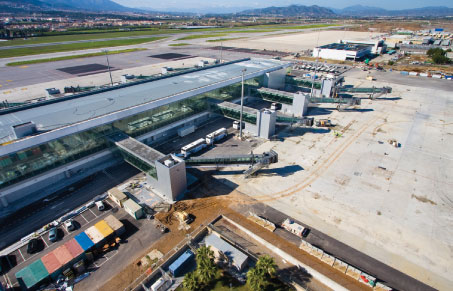
Andión: “The airfield redevelopment works currently in progress are going on at a steady pace and the civil work on the second runway will be completed during the first half of 2011.”
Economic importance
While the benefits of the Plan Málaga project have obvious long-term economic benefits for Aena and the airport itself, the importance of the development can be extended to the economic growth of both the Costa del Sol and the wider reaching Andalucía region. In fact, it is estimated that the airport’s direct economic impact will be worth €861 million, while the indirect impact could be valued at as much as €7 billion.
Andión said: “The benefits the facilities bring are the result of a great infrastructure, a great opportunity for everybody that generates business, employment and wealth for the city of Málaga, and for the whole region around it, including the Costa del Sol, and they place the airport as a reference point among the Mediterranean tourist airports.”
RCS’s runway services
RCS Contracting is a partner of SMETS-Technology and offers a range of technically advanced equipment and vehicles as part of its rubber and markings removal service.
At present, RCS operates four ARC 1000 Airport Runway Cleaner vehicles – two in Europe and two in the Middle East – to carry out a variety of services, including rubber removal on runways, removal of markings, cleaning of large-scale areas, friction coefficient measurements, improvement of grip and removal of oil.
The rubber deposits and markings on runways are solely removed by water, while the water and residues are withdrawn by suction. On the vehicle, all essential components are hydraulically driven and the required power is derived from two sources: firstly, via a direct auxiliary drive system, and secondly, via a gear, which is built into the drive shaft with a hydrostatic drive.
In everyday operation, the ARC 1000 is also extremely environmentally friendly, operating with a performance rate of up to 3,500sqm/hour for rubber removal and up to 2,000m/hour for demarking work, while water consumption is less than two litres per sqm. Furthermore, no chemical or biological additives are needed, ensuring that operation of the vehicles is economically efficient.







